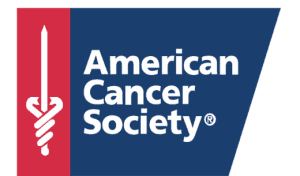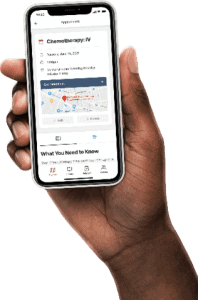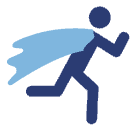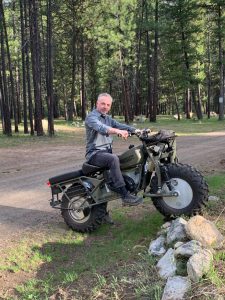Perspectives
7wireVentures Presents: Top of the Ladder Featuring Jasper Health CEO and Co-Founder Adam Pellegrini

Adam Pellegrini is the CEO and Co-Founder of Jasper Health, an end-to-end care experience that navigates, connects, and provides actionable insights for those living with cancer, their caregivers, and providers throughout the cancer journey.
Prior to joining Jasper as CEO, Adam served as an SVP of Enterprise Virtual Care & Consumer Health Innovation, at CVS Health where he led cross company telemedicine and virtual care strategy design and execution. Adam has an extensive career in digital health, previously serving as the General Manager and SVP of Fitbit Health Solutions and as a VP of digital health for Walgreens Boots Alliance Inc. Early in his career, Adam worked in oncology as the National Director of Online Strategy and as a VP of Marketing at the American Cancer Society.
When you were a child, what did you want to be when you grew up?
Well, I went through all my different phases of what I wanted to be, and of course, when I was very young, I wanted to be Indiana Jones. I wanted to have all of these adventurous jobs. For most of my life, I’ve been focused on going to the military and becoming a medic in the military. Even when I was 10 years old, I studied military history, and read probably every medical military manual you could possibly imagine. Fortunately, I did end up being what I wanted to become as a child, at least the first phase of it, when I become an Operating Room Technician.
What was your first job?
I’ve had many small jobs when I was younger, but my first “real” job was when I joined the army when I was 17. My mom even had to sign a permission slip for me to join and attend basic training at Fort Dix in New Jersey during my junior summer in high school! Once I finished basic training, I spent my senior year summer in at the US Army Health and Sciences Academy in Houston, Texas to study how to become a Surgical Technician.
My family’s deep military service history, which goes as far back to the days of George Washington, inspired my passion to join the military. My grandfather served in 35 missions during World War II. My mom worked in the Pentagon for the Air Force during the Vietnam War and my stepdad was a combat medic in Vietnam for three tours. My stepdad is the one who ultimately inspired me to pursue serving the country as a Surgical Technician.
Is there a key learning from your military experience that has shaped the way you lead teams and organizations today?
The lessons I learned from military service have become a core part of my DNA. For me, there’s a constant focus on discipline for myself as a leader. There are times when we don’t want to get out of bed or do something about a problem we are facing. I pride myself on fighting the inertia and have instilled the discipline of constantly moving forward and constantly progressing.
From a leadership perspective, the concept of esprit de corps, or the sense of pride and mission-driven purpose shared as a group. How can you form a team that has such a strong esprit de corps, that it becomes more than any one individual could do? Throughout my career, I’ve really focused on building teams that share this vision and mentality.
What does your morning routine look like and how do you plan for your day?
I have a pretty regimented daily structure. I still wake up very early like I did in the military 20 years ago. First, I knock out my emails and then I block specific times so I can completely focus on dedicated topics.
For example, I have a whole section of my day, focused on original thought and this is something I’m very passionate about at every role that I’ve had. I believe true value is driven by original thought. I find bandwidth in my day, even if it’s just an hour to write something that is net new whether related to Intellectual Property or a new business strategy. Too often we can get caught up in answering emails, working on presentations, and other day to day tasks, but if you don’t constantly generate new IP and new original thinking for your product, it becomes stagnant.
One of the most important principles I follow is to minimize meetings. Unless you’re generating original thought or original dialogue, then the work can be completed by email. I also encourage my teams to block time to get work done or think.
While that works for me, I recognize it does not work for everyone. My goal is to provide my teams the guardrails to create their own patterns that work best for them.
We realize your first entry point into digital health was during your role at the American Cancer Society where you led cancer.org. What are the primary changes you’ve observed in the digital cancer space since the early 2000’s in this first role?
I took my first role at the American Cancer Society in 2000. In the early 2000s, the concept of digital health did not exist. The growth of the internet and increased online content really  compelled the health care industry to do more for patients. The efforts focused on digitizing analog information and putting it online. While that does not sound incredibly sophisticated today, back then that was actually pretty revolutionary! Cancer.org became the engine behind our digital strategy at the American Cancer Society.
compelled the health care industry to do more for patients. The efforts focused on digitizing analog information and putting it online. While that does not sound incredibly sophisticated today, back then that was actually pretty revolutionary! Cancer.org became the engine behind our digital strategy at the American Cancer Society.
In 2004, I was part of this small venture-like team within the American Cancer Society, and I became the first recipient of a new technology grant to create a prevention reminder system. The product automatically identified and tagged employees who needed to engage in cancer prevention activities, such as a colorectal screening, and then generate reminders to remind others to get their screenings. We used this “new” tool called SMS to text patients to schedule their remaining reminders. From this experience, I knew that digital health had tremendous potential for impact and that there was a need for cancer patients and cancer caregivers to have some type of digital platform to make life easier.
We understand Jasper was founded to help cancer patients, their families, and caregivers navigate treatment with personalized and meaningful support. Can you share a bit about the company and what inspired you to lead the business?
This question takes me back to why I got into digital health in the first place. It’s to help cancer patients and caregivers. When you work hard and are tired at the end of the day, you can look back and know what you did today was worth it. Each day, you know you are helping people with a very serious disease get through the hardest time in their life.
Looking back on my time at Cancer.org, we provided over 400,000 pages of health content, and while that was impressive at the time, I knew it was not enough. As a result, I’ve been on the relentless pursuit of translating information into actions that consumers can drive. Whether it was at Walgreens, Fitbit, or CVS Health, the question was always the same: Can I get a consumer to take a health action digitally?
“For my entire career, I’ve been on the relentless pursuit of translating information into actions that consumers can drive. Whether it was at Walgreens, Fitbit, or CVS Health, the question was always the same: Can I get a consumer to take a health action digitally?”
With this in mind, I was particularly excited to join Jasper. I had already seen the inklings of really strong consumer engagement such as consumers signing up for Jasper, putting in inflammation tracking symptoms, and identifying micro actions. The exciting part was to align the micro actions with digital interventions that have an efficacy behind them, and then connect that to the broader healthcare system, where those interventions could have positive health outcomes, increase quality of life, and decrease medical costs. That’s the future of Jasper. That is why I came to Jasper because we are only scratching the surface of the tremendous potential that we have in our journey ahead.
We are so excited to have co-led Jasper’s $6.75M seed-plus financing round! Congratulations! Can you share a bit about what excites you about the future of company and what users can expect in the next year?
At Jasper, we’re moving fast and we’re building out features that demonstrate a deep understanding of our patients. Jasper was built on over 2,000 interviews with patients. We have  consistently continued to do research with patients and caregivers so we can recognize pain points and build not only what they need, but also what we can anticipate they may need. For example, we recently built a solution that helps patients manage their medications. That wasn’t originally on the platform. Now we actually enable patients to put in all medications they are taking for other chronic conditions such as asthma and heart disease beyond just ones for cancer treatment.
consistently continued to do research with patients and caregivers so we can recognize pain points and build not only what they need, but also what we can anticipate they may need. For example, we recently built a solution that helps patients manage their medications. That wasn’t originally on the platform. Now we actually enable patients to put in all medications they are taking for other chronic conditions such as asthma and heart disease beyond just ones for cancer treatment.
As we continue to move forward, we will enter into additional categories like mental health by adding further capabilities to help both caregivers and patients with mental health issues as they get through the cancer treatment journey. Another area that is critical is helping cancer patients mitigate and prevent malnutrition. In kidney cancer treatment for example, a major challenge for cancer patients is a lack of appetite and therefore malnutrition. Another fundamental area we will address is the lack of physical activity. As you know, people going through cancer treatment actually do better if they’re just a little bit more active. By active, I don’t mean 10,000 steps a day, but as simple as getting up and walking around the room. We will plan on integrating wearables into our solution, so individuals can track their activity and sleep habits, all while having that data visualized so individuals have an easier way to observe how things connect around their treatment.
More importantly, to achieve our scale, we also want to build the ability to connect all of that to the healthcare system so plans, health care systems, care managers, and patient navigators can evaluate which patients need the highest level of care at a certain point in time. We are passionate about enhancing the patient experience with the right features, functionality, and digital intervention.
“We are passionate about enhancing the patient experience with the right features, functionality, and digital intervention.”
What’s your superpower?
 That’s a tough one!
That’s a tough one!
If I had to pick, my superpower is my ability to inspire individuals and teams to drive towards a common vision. I’ve had very serious jobs in my life in which the decisions I had to make came down to life or death. Throughout those experiences, I learned not to take life too seriously because life is too short and precious. Because I’m no longer in those roles where I have to make such decisions, I do my best to inspire my teams and the people around me to balance a bit of levity with the gravity in their lives. I try to create an environment that inspires people to make every day count, but also try to make every day enjoyable for them and those around them.
“I do my best to inspire my teams and the people around me to balance a bit of levity with the gravity in their lives.”
What would you do if you weren’t in healthcare?
 I don’t know if there ever be a time when I’m not in healthcare, but I would say that I would invest more time in the Yellow Pine community, a town located in the mountains of Idaho. This is a small town where my wife was raised and is a special space to my family. Today, I volunteer in Yellow Pine as a firefighter. Perhaps I would pursue becoming the Commissioner of the Fire Department to help prevent forest fires. That way I could still be helping people live a better quality of life. It would be very rewarding because I would see the direct impact of volunteering and helping every single day.
I don’t know if there ever be a time when I’m not in healthcare, but I would say that I would invest more time in the Yellow Pine community, a town located in the mountains of Idaho. This is a small town where my wife was raised and is a special space to my family. Today, I volunteer in Yellow Pine as a firefighter. Perhaps I would pursue becoming the Commissioner of the Fire Department to help prevent forest fires. That way I could still be helping people live a better quality of life. It would be very rewarding because I would see the direct impact of volunteering and helping every single day.
What book are you reading right now?
 I am actually re-reading a book right now for the fifth time! It is truly one of my favorite books of all time: Tides of War by Steven Pressfield and is about the Peloponnesian War.
I am actually re-reading a book right now for the fifth time! It is truly one of my favorite books of all time: Tides of War by Steven Pressfield and is about the Peloponnesian War.
I study and love to read ancient Greek military books. I try to extract as much leadership principles as I possibly can from ancient history. What you find is a lot of the principles that we espouse today actually generated back then. I’ve always been big believer that we should learn everything we can from the past so that we don’t repeat the mistakes of the past, and that includes mistakes that we can translate into the business world.
Lastly, what is one piece of advice you would give to our readers?
It’s never too late and you’re never too old. I’ll say this again: It’s never too late and you’re never too old.
I am now in my mid 40s and I had never really been a CEO of a startup in the way that I am today. Oftentimes, it is a little scary to take risks, especially if you are already in a very comfortable situation. Ultimately, it goes back to you only live once, so pursue your passion and take the risk. All you can do is the best that you can do. Looking back, my path didn’t exactly end up as I had thought it would, but I am glad because I wouldn’t change any part of it.
“Looking back, my path didn’t exactly end up as I had thought it would, but I am glad because I wouldn’t change any part of it.”